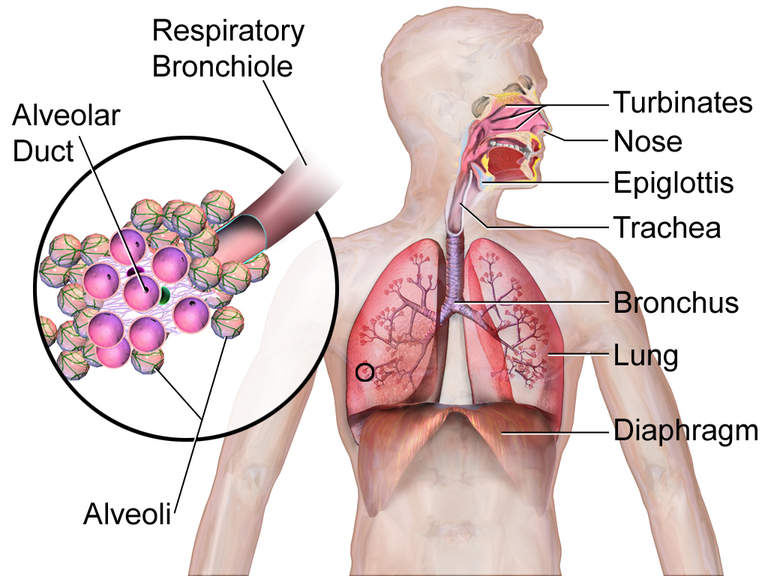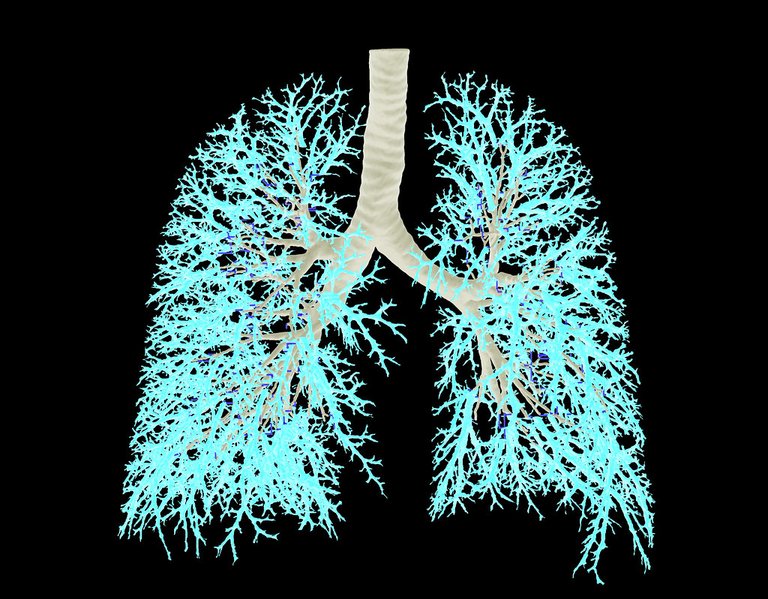Breathing is something you do everyday without a break, and you aren't always thinking about it except now that i just mentioned it to you. Certainly, we wouldn't be alive if we couldn't breath air and we wouldn't be humans, vertebrates, or animals if we couldn't breath in oxygen. Vertebrates depend on oxygen to perform our usual aerobic metabolic activities. Although, some activities in our body can occur without oxygen but for energy to be produced out of food, we need oxygen.
Since we need oxygen for our metabolic activities, then it means we need to start breathing it into our system then into our red blood cells so they can be delivered to the place where they are needed. So we need to thank the circulatory system for delivering oxygen to different body parts where they are used. Oxygen is everywhere around us, in fact plants give us oxygen as well, so all we need to do is get the oxygen into our body, and this is where the respiratory system comes in.
For respiration to occur, we need to breath-in and breath-out, and they are done by two spongy pink-like air sacs spanning from the stomach to the breastbone known as the lungs.Although you might have heard that your lungs are similar, you should not mistake them for being identical because they are not identical. You want me to prove it to you? I'll so that real quick; do you know that your right lung have three lobes while your left lung has two lobes, and this is because the heart rest between to the two lungs but majorly towards the left one in what is known as the cardiac notch.
During breathing the diaphragm is very important. It is found below the lungs,separating the abdomen from the thorax. The lungs doesn't have muscles of their that they use for their movement and would just follow the rib cage which they are connected but the diaphragm is connected to the external intercostal muscles between the ribs and when they move, they expand the space, and volume in the thoracic region, thereby changing the pressure inside the lungs as a result of inverse relationship between pressure and volume. So when the diaphragm is contracted, to allow air into the lungs as a result of the chest expanding, there is a higher pressure in the air outside the body compared to the air inside the body.
Since with diffusion where air move from high concentration to a low concentration, so is it that air move from a high pressure to a low pressure until the pressure is constant. The opposite happens with exhaling when the diaphragm is relaxed. This physics phenomenon will continue to happen biologically without noticing anything as we are breathing in air forcefully into the body and out. It is done by involuntary physics rules, and these rules will continue to occur provided there are organs that are able to make them happen.
The mouth and the nose are the major external interfaces for air to get into the lungs. They do this while keeping the air that is going into the body warm, humid, and it also trap germs. The killing of germs in the nostrils is thanks to Mucus membrane packed with immune cells. When the air gets into the nostrils, it flows through cartilaginous tubes past the larynx, and then it into the trachea which splits into two bronchi which then divides into bronchioles which then breaks down into alveoli which then interacts with our capillaries. This is where the exchange of gaseous particle happens.
For gaseous exchange to enter to the blood stream capillaries from the alveoli, it utilizes diffusion dissolving in the blood but then oxygen just like Nitrogen isn't very soluble in liquid, but for its movement, it takes advantage of pressure differences so it follows the ride since its partial pressure is high in the alveoli. When oxygen enters into the capillaries, it sticks to hemoglobin in the red blood cells and it is transported around the body to tissues where it is needed. In the tissue, the partial pressure of oxygen is lower than it is in the blood, so it flows into the tissue where it is consumed for metabolic activity releasing carbon dioxide.
Reference
https://www.nhlbi.nih.gov/health/lungs
https://www.livescience.com/22616-respiratory-system.html
https://courses.lumenlearning.com/suny-ap2/chapter/gas-exchange/
https://www.ncbi.nlm.nih.gov/pmc/articles/PMC6420699/
https://www.nature.com/articles/s42254-022-00506-7
https://people.na.infn.it/~semgr4/doc/050617.pdf


